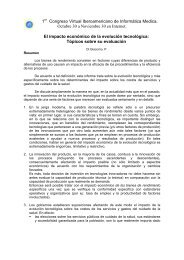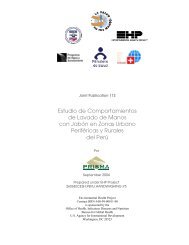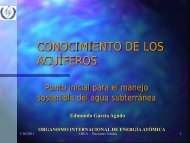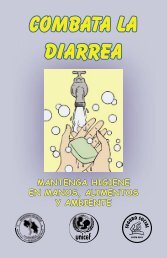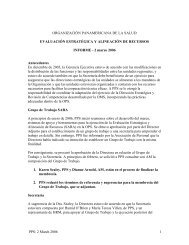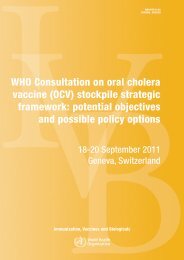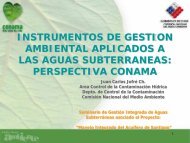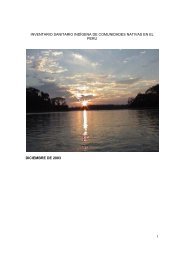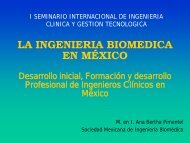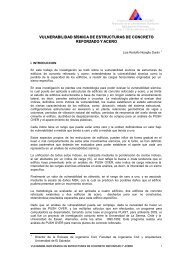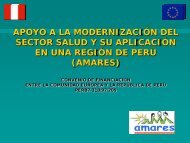a database of the National Library of M
a database of the National Library of M
a database of the National Library of M
You also want an ePaper? Increase the reach of your titles
YUMPU automatically turns print PDFs into web optimized ePapers that Google loves.
Fugitive emission sources; (3) Leakage from pump, compressor, and agitatorseals; (4) Leaks from relief valves; (5) Manual venting <strong>of</strong> gases; (6)Opening <strong>of</strong> equipment; (7) Samples; (8) Leak detection and elimination; and(9) In process wastewater. [40 CFR 61.65 (7/1/90)]**PEER REVIEWED**Vinyl chloride formation and purification: The concn <strong>of</strong> vinyl chloride ineach exhaust gas stream from any equipment used in vinyl chlorideformation and/or purification is not to exceed 10 ppm (average for 3 hrperiod), except as provided in 40 CFR 61.65(a). [40 CFR 61.63(7/1/90)]**PEER REVIEWED**This action promulgates standards <strong>of</strong> performance for equipment leaks <strong>of</strong>Volatile Organic Compounds (VOC) in <strong>the</strong> Syn<strong>the</strong>tic Organic ChemicalManufacturing Industry (SOCMI). The intended effect <strong>of</strong> <strong>the</strong>se standards isto require all newly constructed, modified, and reconstructed SOCMIprocess units to use <strong>the</strong> best demonstrated system <strong>of</strong> continuous emissionreduction for equipment leaks <strong>of</strong> VOC, considering costs, non air qualityhealth and environmental impact and energy requirements. Vinyl chloride isproduced, as an intermediate or a final product, by process units coveredunder this subpart. [40 CFR 60.489 (7/1/2000)]**PEER REVIEWED**Vinyl chloride has been designated as a hazardous air pollutant undersection 112 <strong>of</strong> <strong>the</strong> Clean Air Act. [40 CFR 61.01 (7/1/2000)]**PEERREVIEWED**Listed as a hazardous air pollutant (HAP) generally known or suspected tocause serious health problems. The Clean Air Act, as amended in 1990,directs EPA to set standards requiring major sources to sharply reduceroutine emissions <strong>of</strong> toxic pollutants. EPA is required to establish andphase in specific performance based standards for all air emission sourcesthat emit one or more <strong>of</strong> <strong>the</strong> listed pollutants. Vinyl chloride is includedon this list. [Clean Air Act as amended in 1990, Sect. 112 (b) (1) PublicLaw 101-549 Nov. 15, 1990]**PEER REVIEWED**CLEAN WATER ACT REQUIREMENTS:Toxic pollutant designated pursuant to section 307(a)(1) <strong>of</strong> <strong>the</strong> FederalWater Pollution Control Act and is subject to effluent limitations.[40 CFR401.15 (7/1/2000)]**QC REVIEWED**FEDERAL DRINKING WATER STANDARDS:EPA 2 ug/l[USEPA/Office <strong>of</strong> Water; Federal-State Toxicology and RiskAnalysis Committee (FSTRAC). Summary <strong>of</strong> State and Federal Drinking WaterStandards and Guidelines (11/93)]**QC REVIEWED**STATE DRINKING WATER STANDARDS:(CA) CALIFORNIA 0.5 ug/l[USEPA/Office <strong>of</strong> Water; Federal-State Toxicologyand Risk Analysis Committee (FSTRAC). Summary <strong>of</strong> State and FederalDrinking Water Standards and Guidelines (11/93)]**QC REVIEWED**(FL) FLORIDA 1 ug/l[USEPA/Office <strong>of</strong> Water; Federal-State Toxicology andRisk Analysis Committee (FSTRAC). Summary <strong>of</strong> State and Federal DrinkingWater Standards and Guidelines (11/93)]**QC REVIEWED**(NJ) NEW JERSEY 2 ug/l[USEPA/Office <strong>of</strong> Water; Federal-State Toxicology andRisk Analysis Committee (FSTRAC). Summary <strong>of</strong> State and Federal DrinkingWater Standards and Guidelines (11/93)]**QC REVIEWED**



